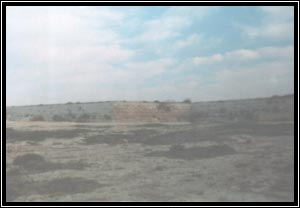The Feast
The Louvier entrenchment is the most interesting entrenchment built at Mellieha. It includes also embrasure for four cannons. A large part of the entrenchment is in a good state and is one of the best preserved in the whole Islands. However, it has to be conserved too.
Louvier entrenchment is found at Armier. This entrenchment was built in the early 1760s under the supervision of Bailli de Tigne. Louvier entrenchment also formed part of the ambitious plan of Bourlamaque of surrounding the Maltese islands with entrenchments. Only a small fraction of the proposed entrenchments to be built in Mellieha on the coast facing Comino were actually built, that is in the areas from Cirkewwa to the White Tower. 1

It consists of a bastioned enceinte with a front of two demi-bastions linked by a curtain of wall. In the west demi-bastion overlooking Barriera Redoubt there are four embrasures which were used for the artillery. The Hospitallers also attempted to excavate a ditch in front of the entrenchment but was abandoned, probably due to lack of finances. 2
We have to bear in mind that Bourlamaque plan was not all implemented because of the lack of money. Therefore, the partial building of entrenchments, both Louvier and Ta’ Qassisu entrenchments serve as an answer for the lack of finances. If the Hospitallers had no lack of money that coast would have been defended well, although the Knights would encounter another problem, that is of lack of manpower.
References:
1 Stephen Spiteri. Fortresses of the Cross: Hospitaller Military Architecture (1136-1798), A Heritage Interpretation Services Publication, Malta, 1994, p 572.
2 Ibid.
Researched and Written by: Charles Debono B.A.(Hons) History